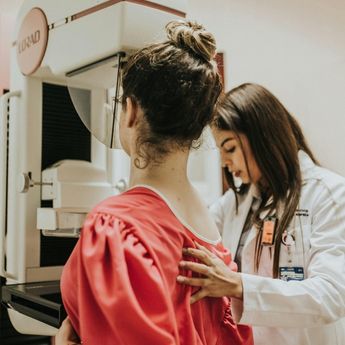We’ve been talking a lot lately about side effects and ways to manage or cope with the many symptoms of cancer treatment. But what we haven’t talked about in all of these posts is how cannabis (or marijuana) can be used to help with your side effects. We thought it best to dedicate a blog post entirely on cannabis to help you better understand how it may help relieve your symptoms and how it’s regulated in Canada.
Cannabis has been creating a lot of attention in the media with the Canadian government working towards recreational legalization later this year. But access to dried cannabis for medical purposes has been available since 1999, while oils and fresh marijuana buds have been medically legal since 2015.
The cannabis plant is full of chemical compounds known as cannabinoids. These cannabinoids, when inhaled or ingested, activate cannabinoid receptors in the body that produce a variety of effects. There are two active cannabinoids in cannabis that have been known to help ease symptoms of disease and treatment. Delta-9-tetrahydrocannabinol (THC) is the main active ingredient in cannabis. It is the chemical that seems to cause the “high” people feel when they inhale or ingest cannabis. The other cannabinoid known to help ease symptoms is cannabidiol (CBD). CBD does not produce the high that THC does. Different strains of cannabis can have different levels of THC and CBD and can therefore have different effects depending on the strain used.
THC can help to:
- Relieve pain
- Relieve nausea
- Increase appetite
While CBD can help to reduce:
- Inflammation
- Anxiety and paranoia
- Seizures
Many of these symptoms are present during cancer treatment. And although there are prescription drugs available to help manage them, many people are concerned about taking so many additional medications. Using cannabis to potentially relieve all of these symptoms is an option that may be appealing to some people.
There are different ways to use cannabis which can also produce different effects. Dried cannabis can be inhaled through smoking or vaporization. Inhaling cannabis means it enters your body through the bloodstream. It is fast acting and you can feel the effects more immediately; however, consideration around the risks of inhaling smoke should be considered. Another form of consumption is oral ingestion through cannabis oils. Cannabis oils are processed by the body through the liver. Oils can take longer to produce effects but it does last longer than inhaling.
Accessing medical cannabis has become a lot easier. There are, however, guidelines for buying and possessing medical cannabis. First, you’ll need a prescription from your doctor authorizing you to obtain and possess medical cannabis. Once you have authorization you can access medical cannabis in three ways: You can register and purchase cannabis through a licensed producer; you can register with Health Canada to grow a limited amount on your own; or you can designate someone to grow it for you. Health Canada’s website lists all licensed producers in Canada and has guidelines for producing your own or having someone else do it for you.
Since cannabis is still criminalized in Canada it’s important to know how much you are allowed to possess and how to prove you are eligible to use medical cannabis. According to Health Canada’s Access to Cannabis for Medical Purposes Regulations, a person eligible for medical cannabis can possess either a 30-day’s supply of cannabis or 150 grams – whichever is less.
If you choose to register with a licensed producer they will provide a label on each order with your information. This label, along with photo I.D. is your proof that you are eligible to possess medical cannabis. If you choose to use a different producer, you won’t be able to transfer your prescription. You will need to contact your doctor again and have them re-issue a prescription so you can register elsewhere. Many licensed producers now offer online shopping allowing you to purchase easily and receive your shipment right to your house.
If you choose to produce your own cannabis, you’ll need to register with Health Canada. Once you are registered, you will receive an official certificate from Health Canada that will outline how much you can grow and possess. Individual possession does not change from what we’ve outlined above.
Using medical cannabis can help relieve your many cancer symptoms and there is less of a stigma for choosing to do so. Later this week, you’ll hear first hand from a breast cancer patient who has experienced the benefits of cannabis. Stay tuned!
Photo by elizabeth lies on Unsplash







